What it’s like on the $1000 a night Barrier Reef island that sleeps 18
There’s an exclusive island resort on the Great Barrier Reef that hosts just 18 visitors at a time and absolutely no kids, ever. This is what it’s like to stay there.
QWeekend
Don't miss out on the headlines from QWeekend. Followed categories will be added to My News.
THE show starts at dusk.
As the sun sets, the star performer appears, making a dramatic entrance riding in on a wave.
The stage is a pristine white beach on Wilson Island, a tiny coral cay on the southern Great Barrier Reef, off the Central Queensland coast, where a big green sea turtle wows an exclusive audience of seven.
As part of an ancient ritual, she uses her front flippers to slowly drag herself up the beach in a breaststroke motion, searching for a suitable place to lay her eggs.
DRAWING BLOOD: THE AMAZING CAREER OF A MEDICAL ILLUSTRATOR
LOVE PREVENTED QLD DOCTOR FROM RETURNING TO HIS HOMELAND
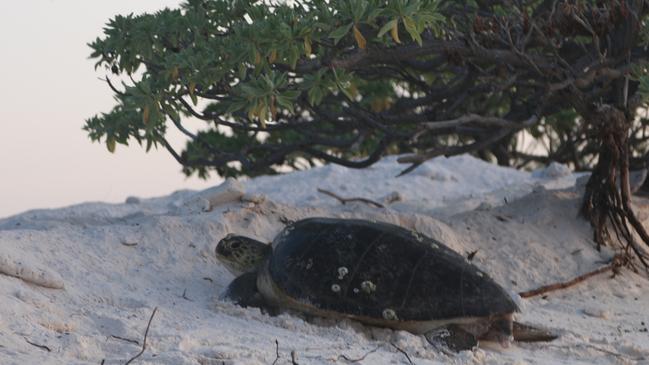
It’s a mesmerising performance.
Throughout the night, the show is repeated as more female turtles arrive to dig their nests, their flippers working like shovels, sand flying in the air.
At the same time, in an ultimate double act, dozens of tiny baby turtles explode out of nests laid weeks ago, instinctively scrambling towards the ocean.
The marathon performance doesn’t end until the next morning. At 6am, after she finishes laying her eggs, a mother turtle waits on the edge of the ocean for a wave to take her back out to sea. One of the divas of the natural world, she’s gone as quickly as she arrives.
Afterwards, distinctive tracks decorate the beach, the imprints left by the mother turtles’ front flippers appearing like tyre marks in the sand.
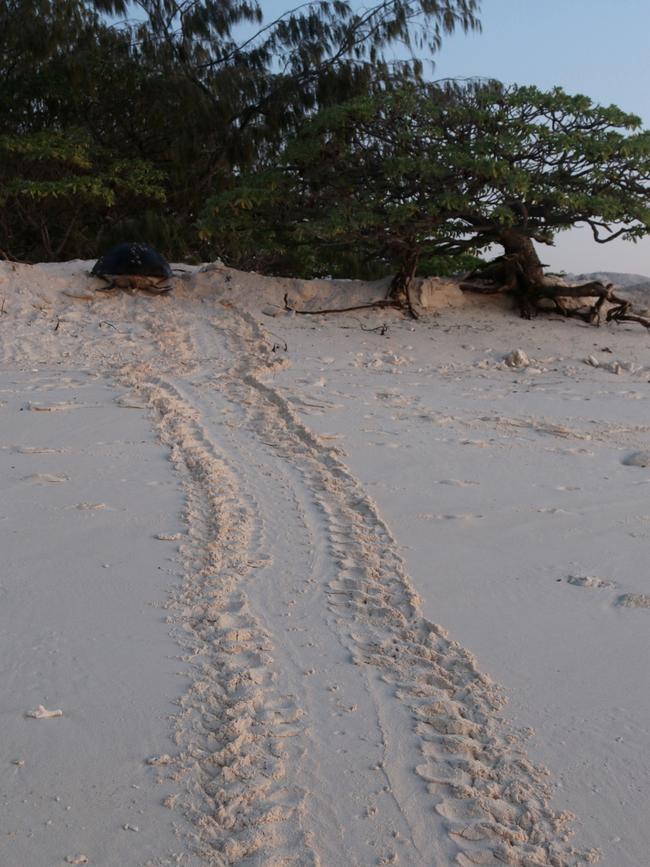
But there are no jarring revs from car engines or horns beeping here, just nature’s glorious symphony – the soothing sounds of the sea and a cacophony of bird noises.
Wilson Island, a two-hectare tropical island paradise, about 80km northeast of Gladstone, accommodates a maximum of just 18 guests at any one time in nine comfortable eco-tents. It’s the ultimate glamping experience with king-size beds, hammocks, comfortable deck chairs and a breathtaking view of one of the seven natural wonders of the world. A shower and toilet block is a short walk away.
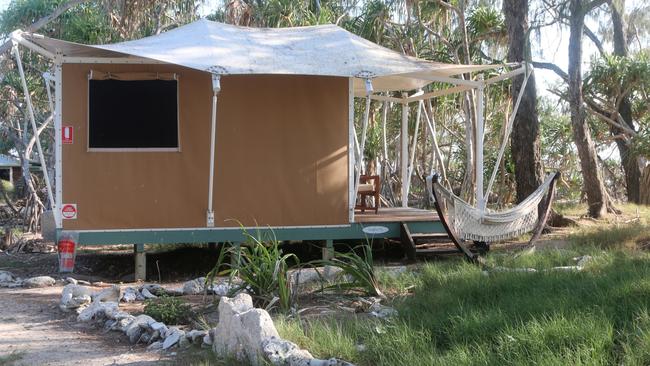
On this weekend, the adults-only island resort’s seven guests are well catered for by two island staff, Hazel Krauss and Enrique Curbelo.
Gourmet meals are served at the Long House, perfectly cooked by Krauss, who completed an apprenticeship at the Adelaide Hilton Hotel, while also studying commercial cookery at TAFE.
A fridge is stocked with a variety of Australian wines, craft beers, ciders, juice and bottled water. Wines from Kinship in Margaret River, Yangarra in McLaren Vale and Giant Steps in the Yarra Valley are among those available. All meals and access to the fridge are included in the cost of staying on Wilson Island.

The revamped resort was reopened in November by its Canadian owners, the Aldesta Hotel Group, which purchased both Wilson Island and nearby Heron Island as a package in 2017.
Wilson Island had been abandoned as a travel destination by previous owners, United States-based hospitality group Delaware North, more than five years ago.
The private island paradise can only be accessed by a 40-minute boat ride from sister island, Heron.
For the ultimate experience, a 25-minute helicopter journey from Gladstone into Heron Island provides a priceless view of the wonderful Wistari Reef.
On a fine day, with the sun shining, the water is crystal clear, making it possible to spot turtles from the air. It’s magical – the type of trip bucket lists are made of.
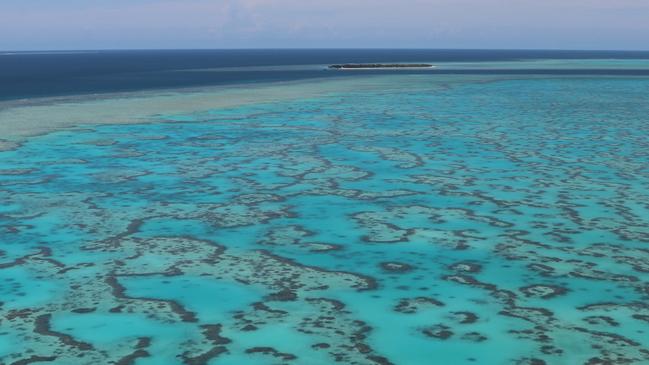
After two hours exploring Heron Island, it’s hard to comprehend how it could ever have been used as a turtle soup cannery, even as far back as the 1920s.
The island’s lease was taken over in the 1930s by Danish-born Cristian Poulson, who found hosting tourists more profitable than canning soup.
With turtle numbers dwindling, the cannery was closed and Poulson opened Heron Island resort in 1932. The island was declared a national park 11 years later.
For decades, Heron Island has been popular among divers, bird watchers and by families who bring children to turtle gaze and snorkel on the Great Barrier Reef, inscribed on the World Heritage List in 1981. Access is as easy as walking into the ocean from the beach.
World-renowned naturalist David Attenborough and the late French underwater explorer Jacques Cousteau are among those the island, and its surrounds, have wowed.
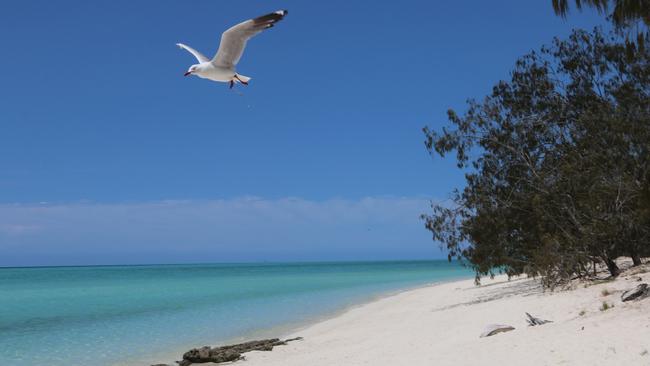
Lesser-known Wilson Island is about eight times smaller than Heron but still offers the wonders of the reef, with the added advantage of more seclusion and intimacy. Heron Island hosts up to 300 guests at a time, compared to Wilson’s 18.
For Miriam Schwarz, a busy American doctor, who stayed on Wilson Island for two nights in January, the appeal of adults-only serenity was a definite drawcard.
She lists “being surrounded by nature and some of its miracles” alongside the peacefulness brought about by the limited guest capacity on Wilson Island as among the experiences she will treasure.
“Each morning when my eyes opened, I felt like a kid on Christmas morning – I couldn’t wait to get out of bed and see what presents were waiting for me that day,” Schwarz says.
“I would go back in a heartbeat. If I were to go back, I’d stay even longer.”
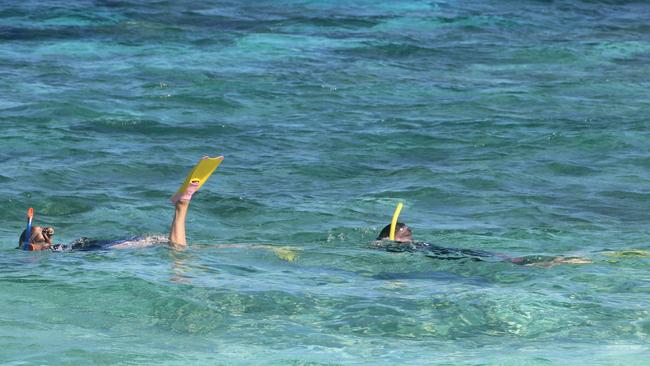
Gladstone couple Raylene and Liam Keenan celebrated their wedding anniversary on the island.
“To take ourselves away somewhere the kids cannot go was special,” Raylene says. “We do so much for our children with sports and time away for them, this was just for us. Relaxation at its best. The wildlife was spectacular on land and at sea.”
Coral gardens begin within a few metres of walking into the sea off Wilson Island.
Beneath the surface is a wonderland of colour, the sun shining on a school of tiny damselfish, shimmering blue, then green as they change direction.
A tiny sting ray lies motionless on the ocean floor and a small whitetip reef shark glides past, totally uninterested in the group of humans in the water.
Swimming among the coral is a bright yellow trumpet fish, spectacular in both shape and colour. Its body is elongated, ending in a long, tubular snout, a bit like a seahorse’s. Amazing.
Blue-green parrot fish are plentiful and among the stars of this captivating underwater masterpiece are butterfly fish, their bodies neon yellow with black stripes.

Gladstone resident David Pirie, who visited Wilson Island with his partner, Karen, says he’s been to Heron Island more than a dozen times, educating his children about nature and the reef there.
He says what he saw snorkelling off Wilson Island “was equal to or better than any dive I can remember”.
“(Heron Island) was one of my favourite places to visit. Wilson is now my new favourite by far,” Pirie says.
Wilson Island is closed by Queensland National Parks in February and March for bird nesting season.
Turtle nesting occurs between October and March and hatchlings emerge between January and May. Between June and October is humpback whale watching season and the reef is there to explore all year round. Seas are calmer and water clarity clearer in winter.
Manta rays also tend to peak around Heron and Wilson Island in the winter and juvenile sea turtles cruise the reefs throughout the year.

Heron Island naturalist and marine biologist Rachael Jones says the latest scientific research suggests the baby turtles that hatch on Wilson Island, if they survive to adulthood, will return to the same beach, or at least to the southern Great Barrier Reef region, in 20 or 30 years to lay their own eggs.
“The turtles use magnetite in their brain to track the earth’s magnetic fields to navigate their way home,” Jones explains.
Just like the turtles, every one of the seven guests who shared Wilson Island on that glorious Summer weekend also plan to return one day. Next time they vow they’ll stay longer.
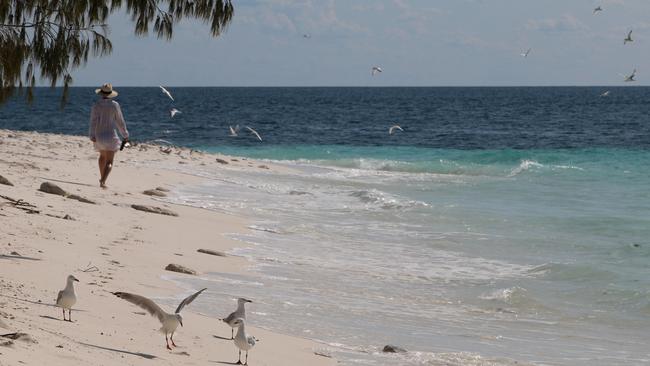
•The writer was a guest of Aldesta Hotel Group.
GETTING THERE:
From Gladstone Airport, helicopter flights to Heron Island: Adults $530 one way.
Seaplane to Heron Island: Adults $349 one way.
Boat from Gladstone Marina to Heron Island (bus transfer available from Gladstone Airport): Adults $75 one-way.
More details: heronisland.com
ACCOMMODATION:
Two nights on Wilson Island costs $2190 twin share. Price includes all meals, drinks and boat transfers to and from Heron Island.
More information: wilsonisland.com


